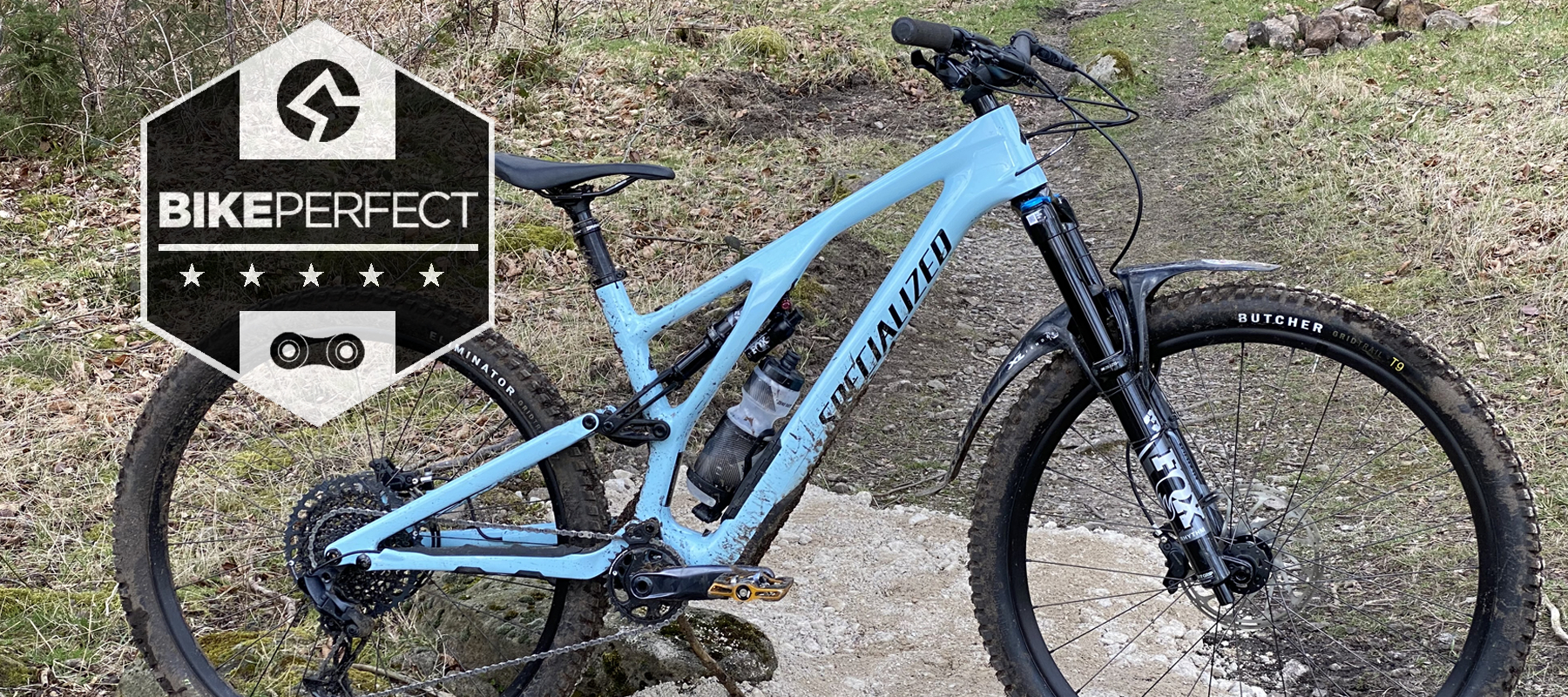Bike Perfect Verdict
An outstandingly practically innovative aggro all-rounder with a superbly balanced, hugely enabling but not intimidating overall ride and a real sweet spot performance to price ratio
Pros
- +
Top-quality, lightweight carbon frame
- +
Seriously progressive, trailside tuneable geometry
- +
Impeccably neutral FSR suspension
- +
Excellent internal storage
- +
Short seat post for size switching
- +
Full SRAM GX drivetrain, complementary tire combo and high control brakes
Cons
- -
Not the sharpest option available
- -
Rad riders might want a shorter stem and bigger/tougher tires
- -
Slow free hub pick up
Why trust BikePerfect
It can be easy to get hung up on the potential performance gains and improved ride quality of the latest and greatest bikes. At the top of the sport, you see the best riders winning races aboard the most cutting-edge bikes. Obviously, while much of the successes achieved by these riders are down to raw talent and dedication, it's hard not to be drawn in by the potential gains of having the best mountain bike. But is it worth investing more money when buying a bike to potentially steal a couple of extra seconds here and there?
We’ve reviewed and loved the affordable Stumpjumper Evo Comp Alloy and the high spec Evo Expert Carbon, but is the cheapest carbon-framed option of the Stumpjumper Evo the sweet spot? We’ve been testing it against direct competitors and the Comp Alloy version on a wide range of trails and rides to find out.
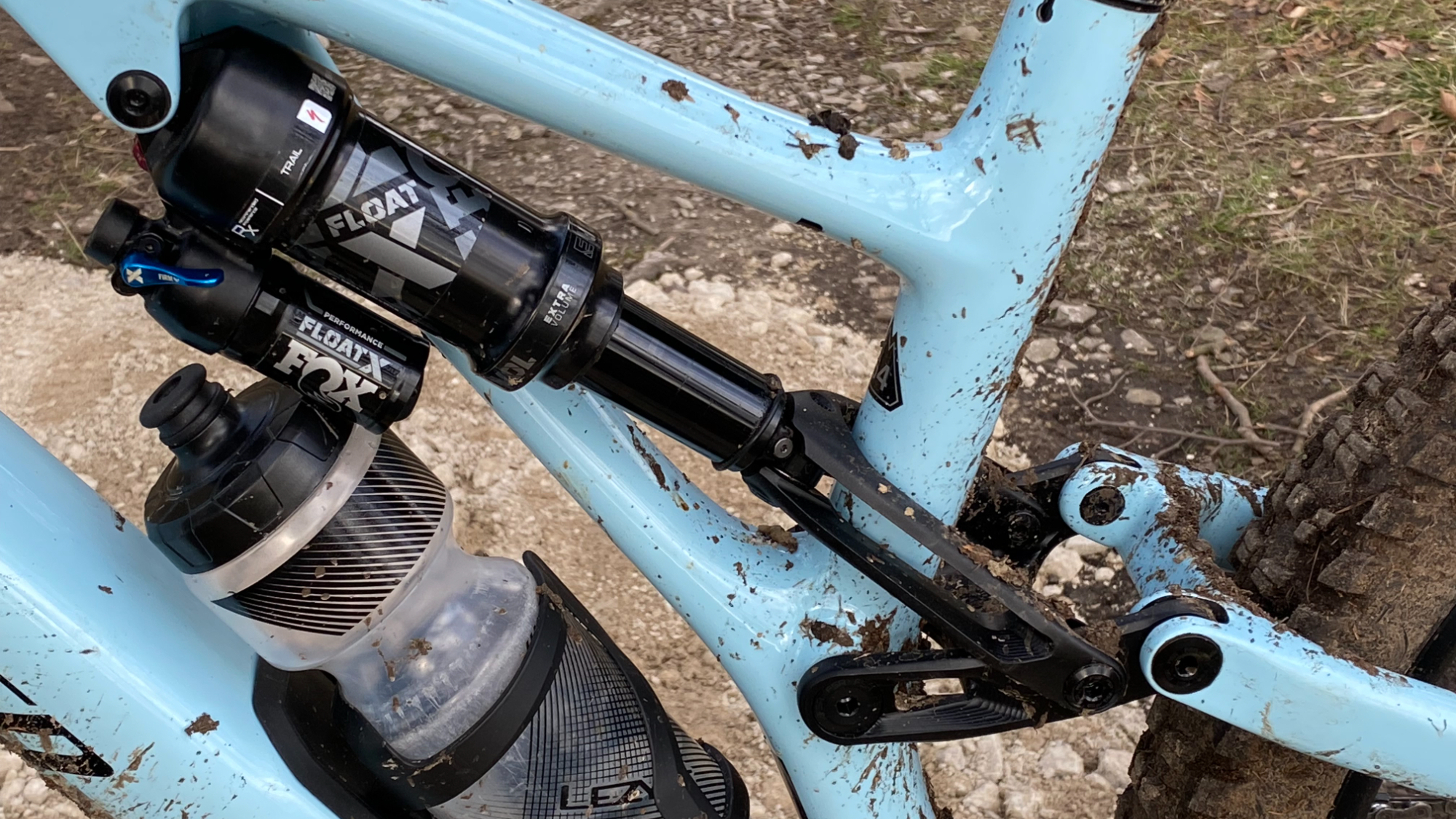
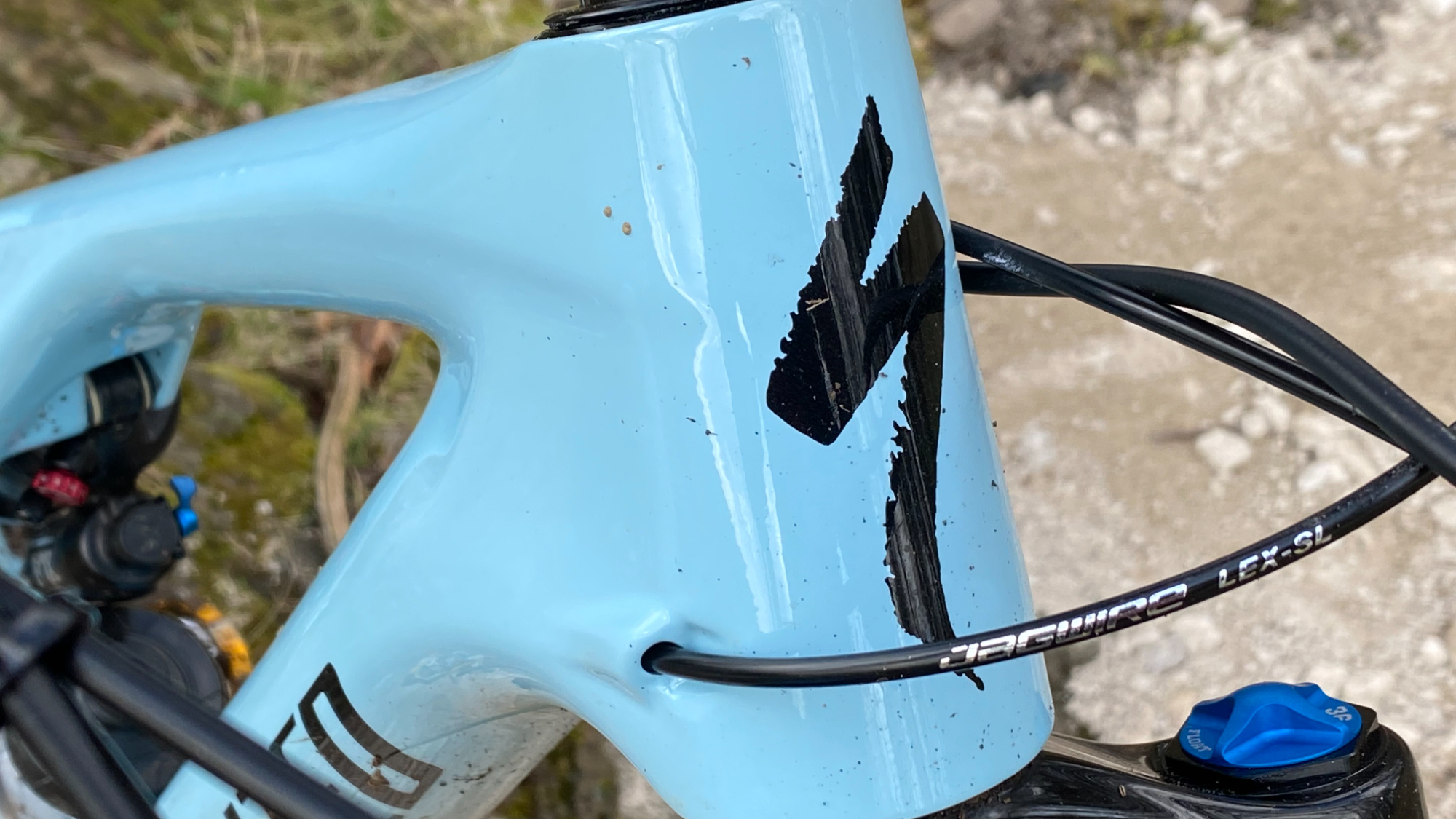
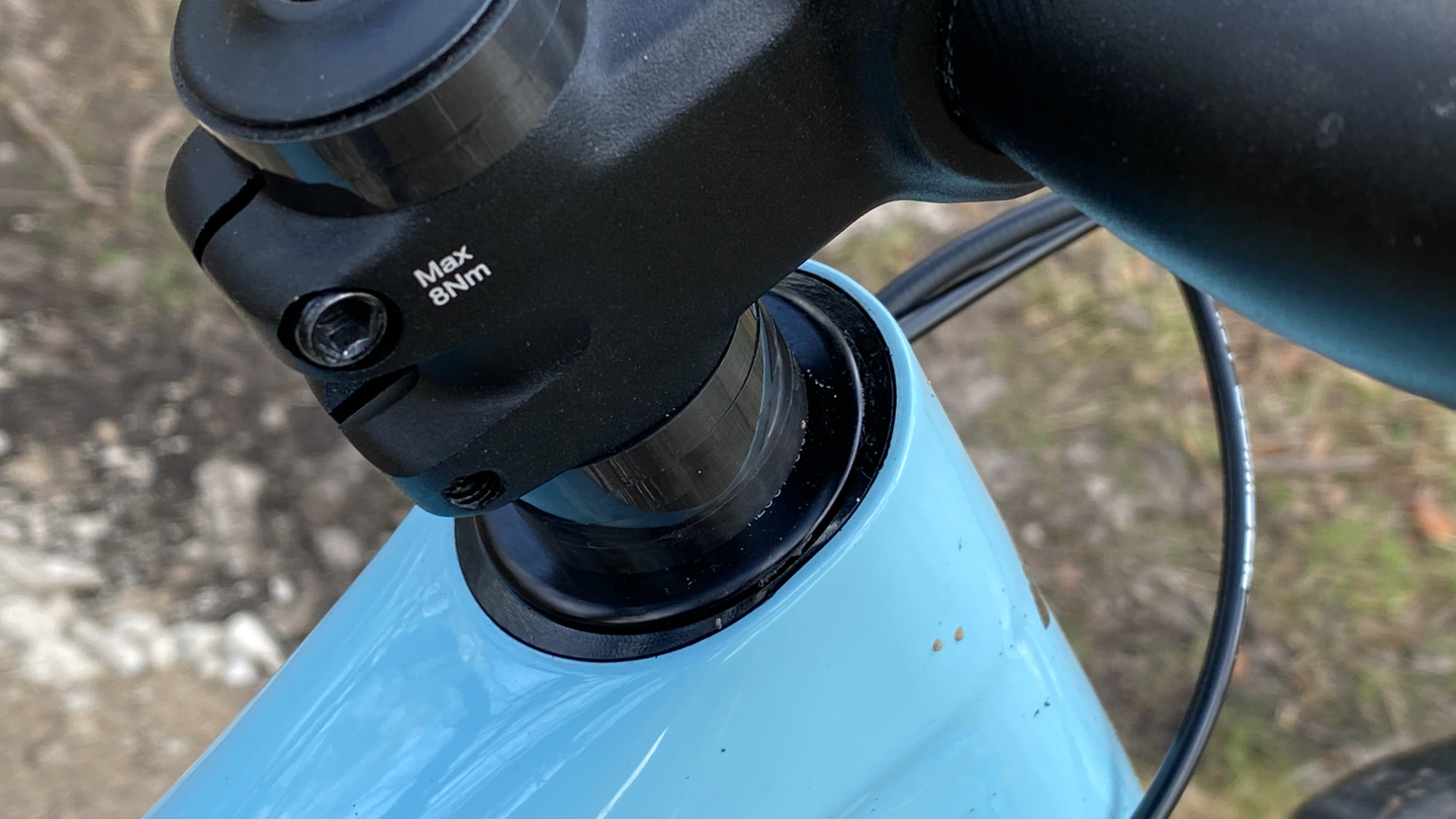
Design and geometry
The first thing to say about the Comp Carbon is that while many brands start their ‘carbon’ range with a composite mainframe mated to an alloy rear end, this bike has a carbon mainframe AND chainstays and seat stays. The bike's frame material is not a cheaper, heavier composite mix than Specialized’s top bikes either. It’s the same size-specific FACT 11M carbon, lay-up schedule, and resins in the same mold as the $11,000/£9,950 S-Works model. The only difference is that the S-Works gets a carbon fiber linkage, which saves around 100g over the forged alloy one on the Pro, Expert, and Comp models.
Otherwise, it’s the same well-proven asymmetric center brace, chainstay pivot FSR four-bar linkage suspension layout loaded with a list of excellent practical features including neat internal routing, screw-in bottom bracket with ISCG tabs, protective belly pan, and deep molded rubber stay wraps to keep things quiet. There are two colors too, the ‘Arctic blue’ tested here and a satin ‘Doppio’ (chocolate brown) option.
While the default 64.5-degree head angle, 77-degree ish (it varies with size) seat angle based geometry is pretty much bang on anyway the real trump card with the Evo is not just its dynamic adjustability, but how easy it is to do. The Evo comes with an extra eccentric headset race cup which either steepens or slackens the head angle by one degree depending on which orientation you fit it into the oversize head tube at. You only need to remove the stem and spacers to switch the cups so it’s literally a manner of minutes to do it on the trail. You can then alter the ride height (and take another 0.5-degree off the head tube by rotating the eccentric chip the chainstay pivot mounts into.
This all subtly changes aspects like reach and rear center (475mm and 438mm S1-4 or 448mm S5-6) in the default mid/high setting) too but it’s the angle changes that are the big deal. Short seat tubes right through the ’S 1-6’ sizing protocol make it easy to pick your bike by length not saddle height too which adds extra fit options.
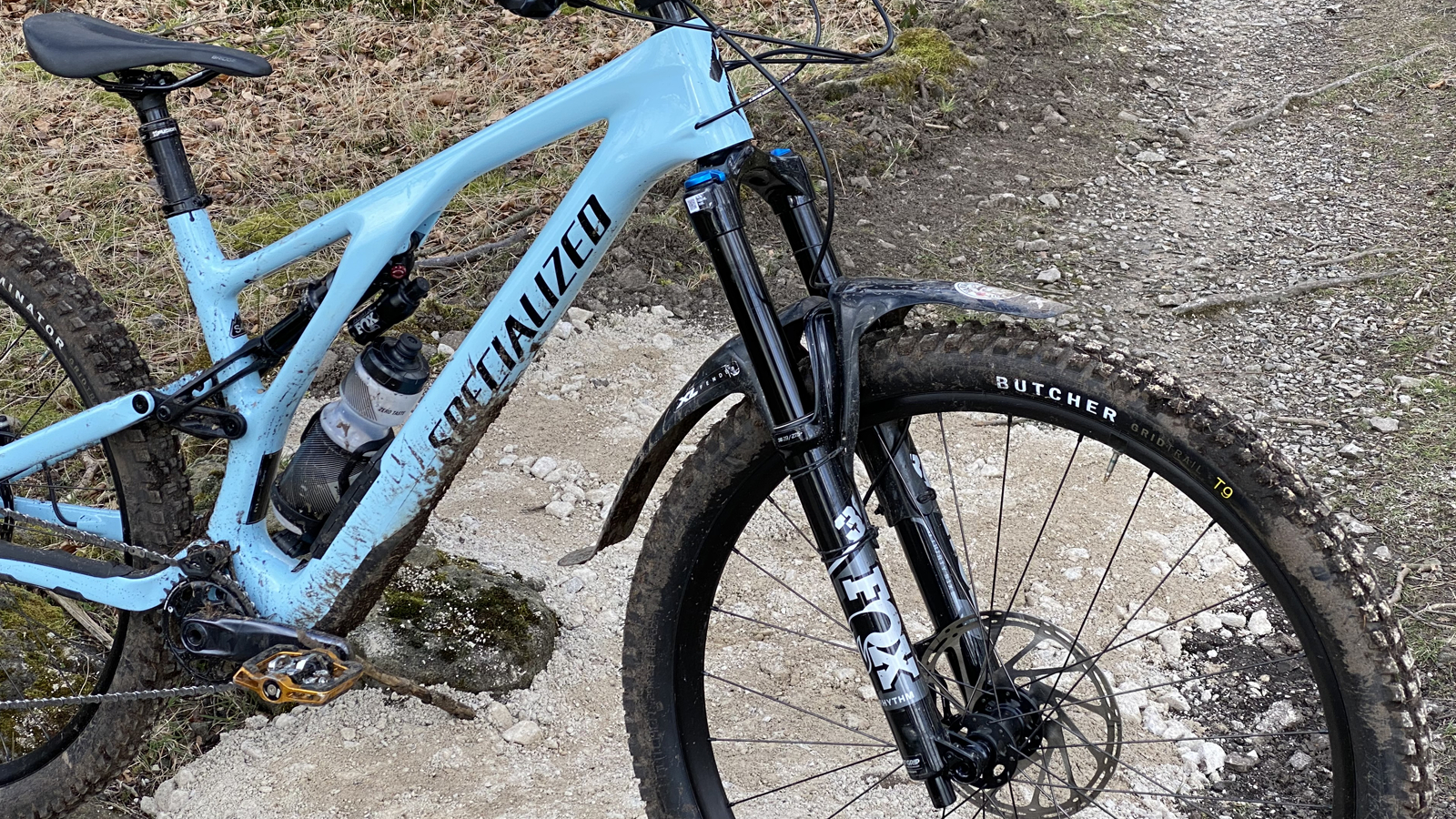
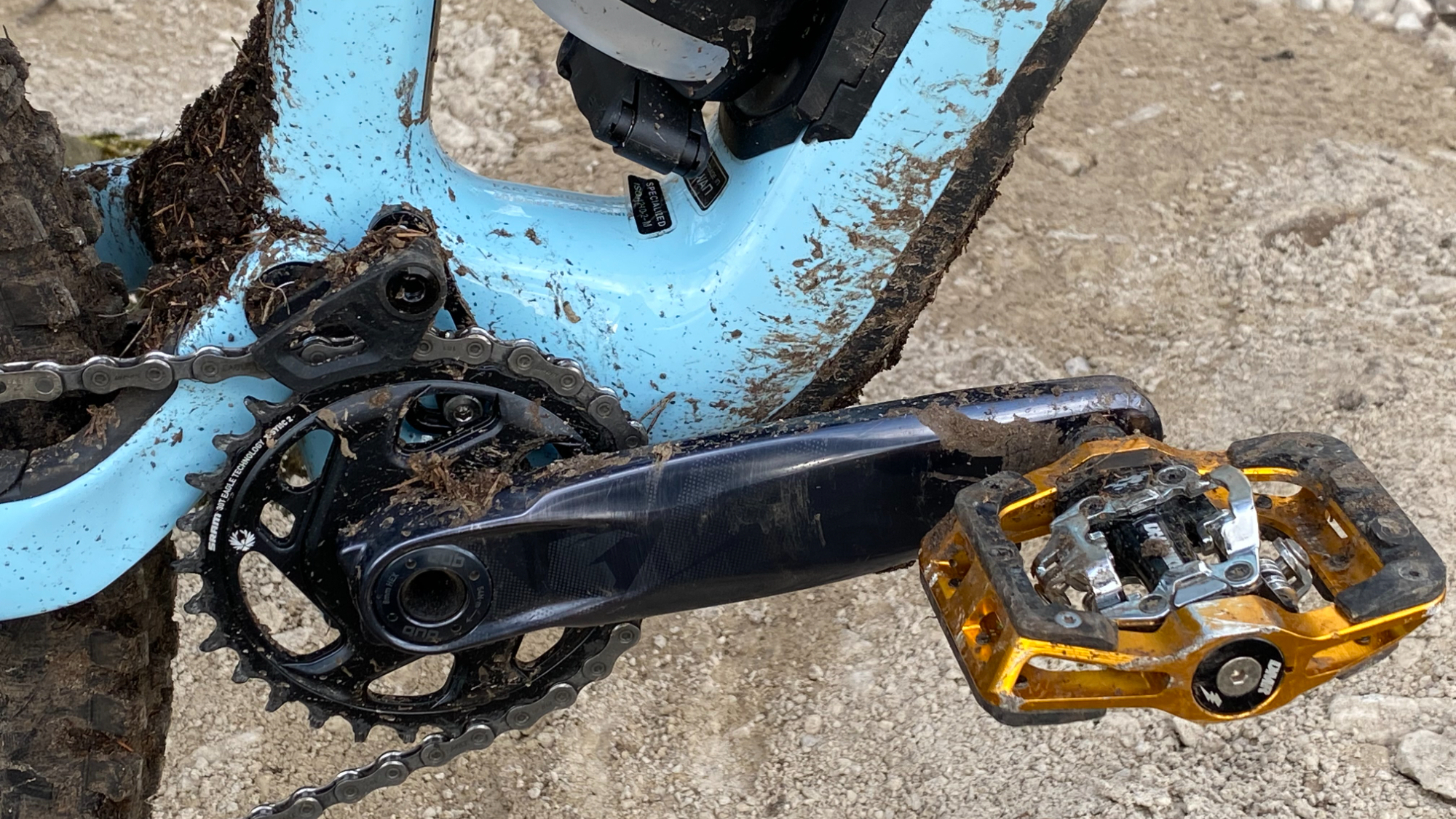
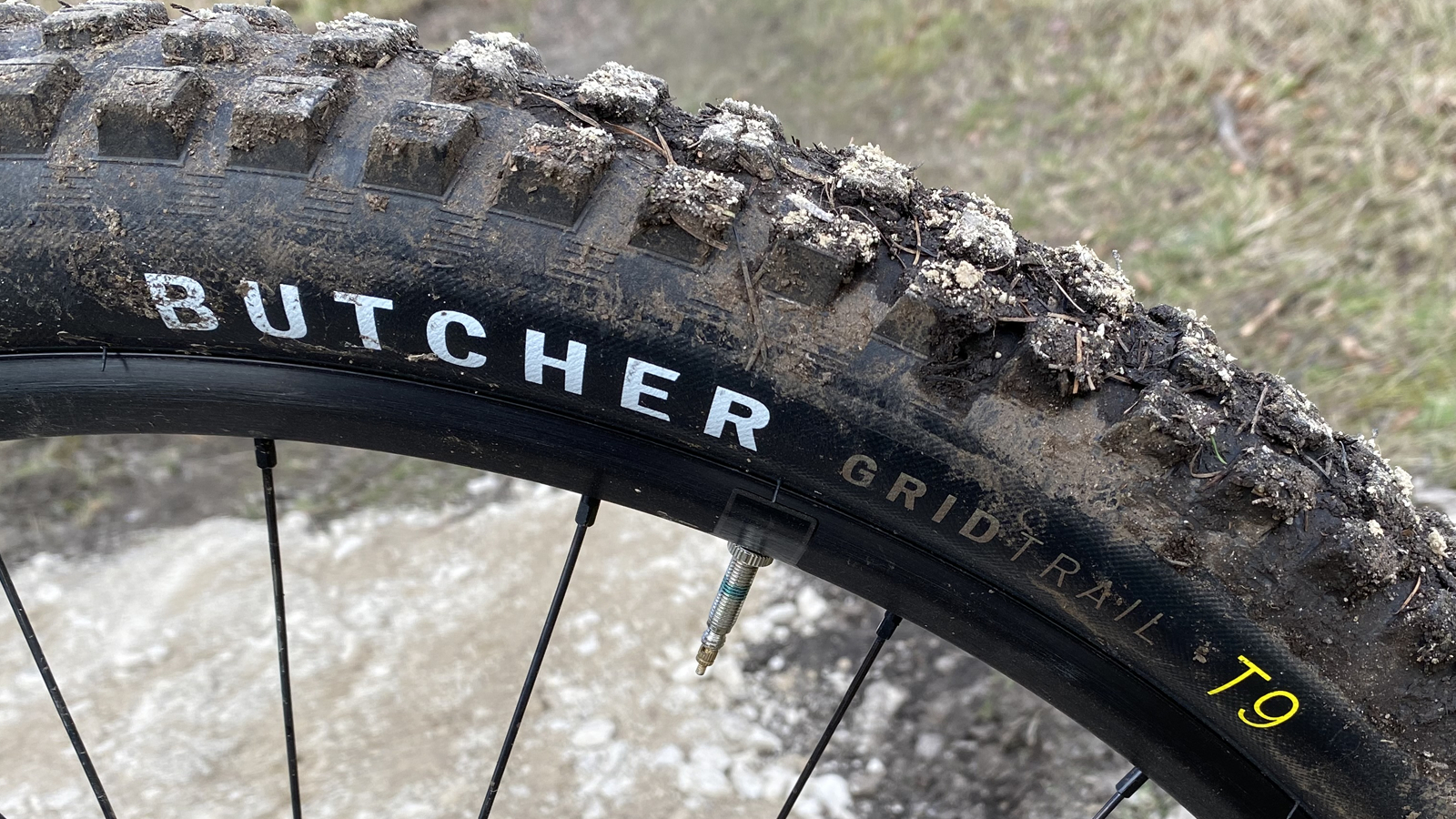
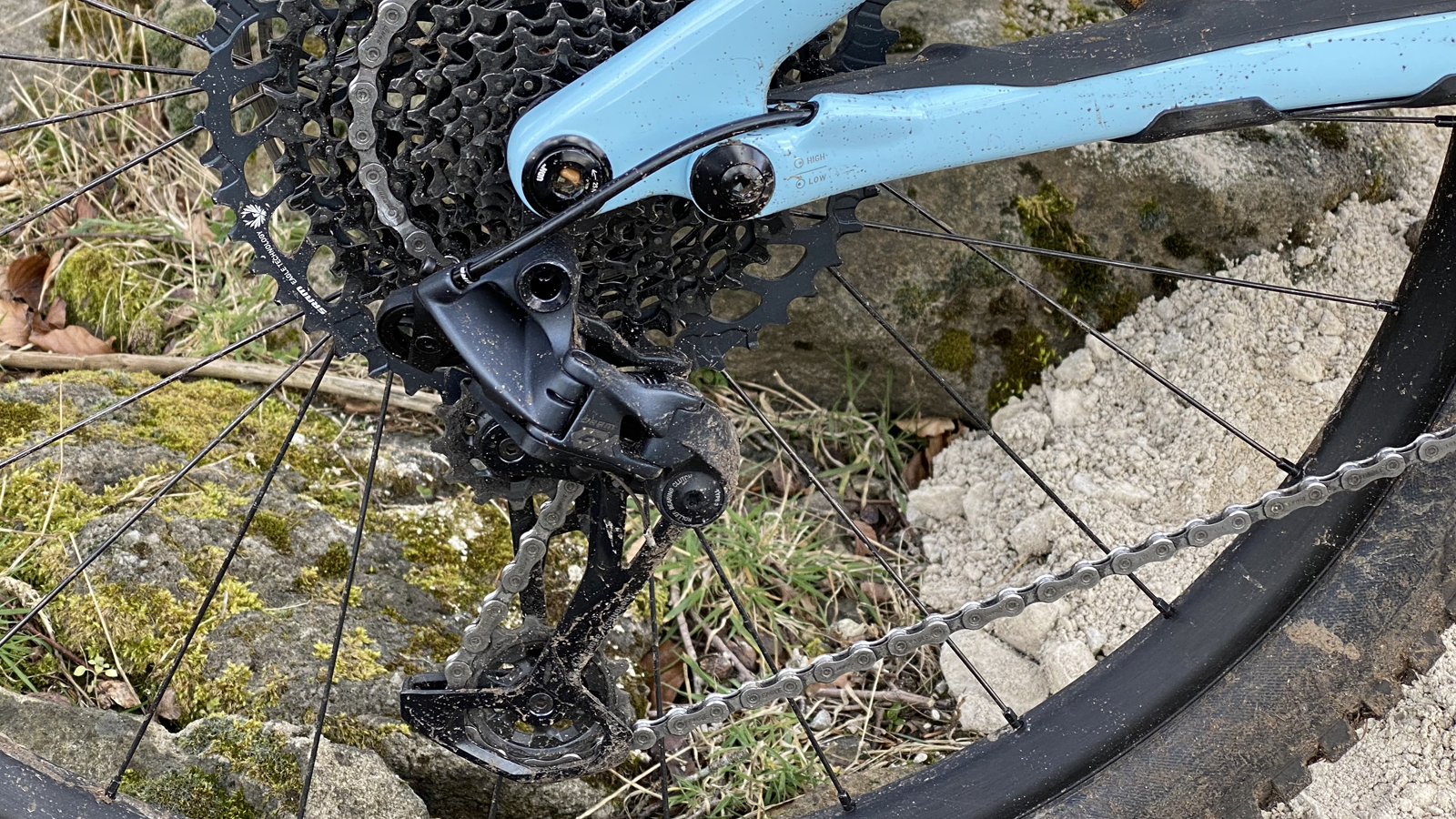
Components and build
Considering the feature-loaded, high-quality fiber frame you’re getting, the component spec on the Comp Carbon is very good too. That includes a hop up from SRAM NX cranks and gears on the Comp Alloy to GX. You even get the significantly pricier but lighter, wider range 10-52 cassette which is often a piece the manufacturers ‘forget’ to upgrade. The SRAM Code brakes are also upgraded to the RS which means the small but significant addition of the Swing Link leverage cam to give more pad clearance but also more progressive feel and power at the lever.
Otherwise, the Fox 36 Rhythm fork and Float X piggyback rear shock with custom ‘RX’ tune are carried across from the Alloy together with Specialized’s Butcher front tire in the excellent T9 slow rebound compound and faster T7 Eliminator rear tire on own brand 30mm rims. The 800mm bar, 50mm stem, single lock grips, and saddle are all own branded while the dropper post is the always reliable X-Fusion Manic, sized to fit the frame proportions. While there are other buying options now too, the ‘above and beyond’ in-store customer care reputation that Specialized has is potentially a real value win when it comes to long-term ownership too.
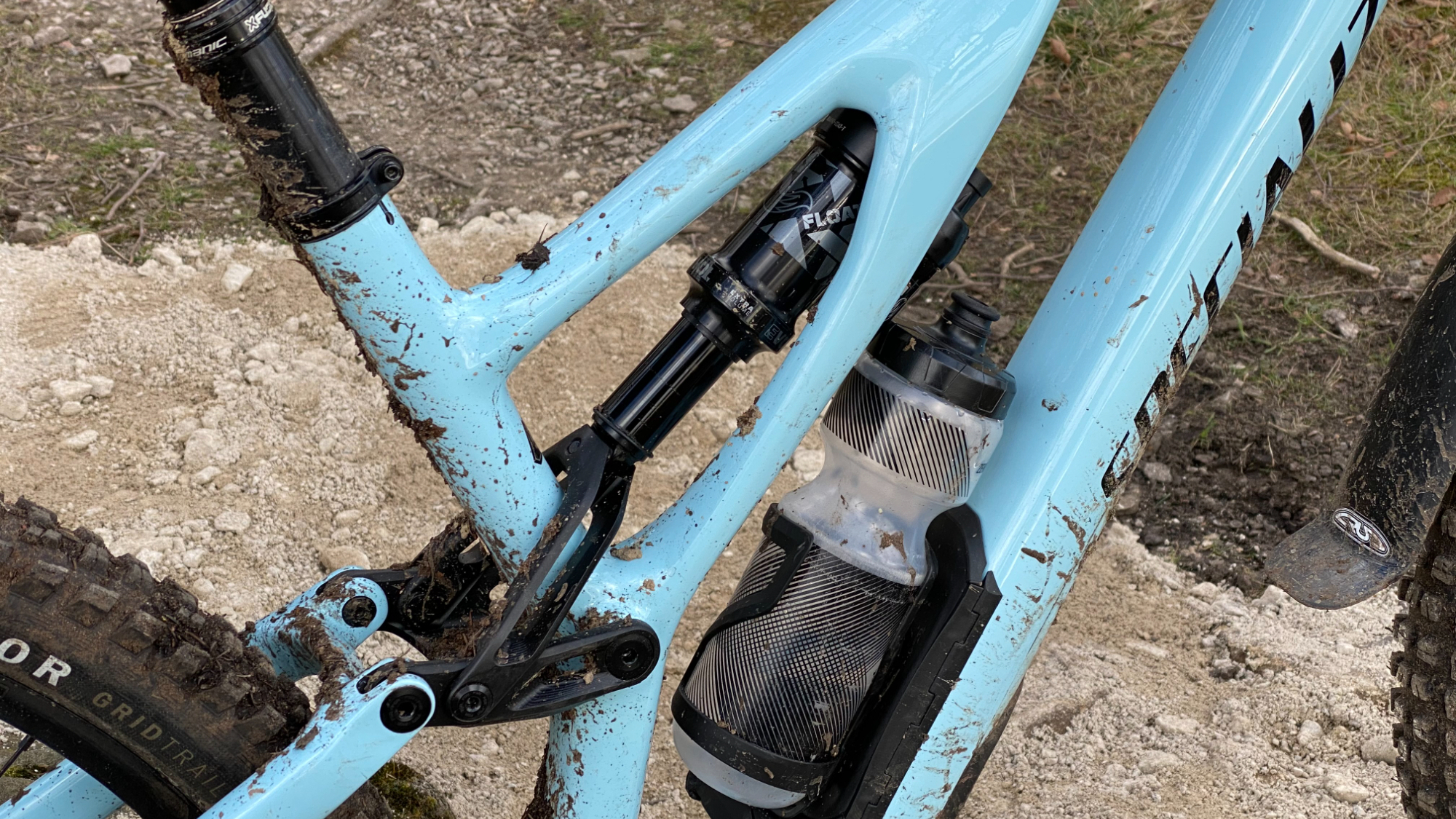
Ride, handling and performance
Having spent a lot of time really enjoying the Specialized Stumpjumper Evo Comp Alloy recently, the Carbon felt very familiar straight away. Familiar is not the same though and there are several ways the fiber bike justifies the extra $1,100/£800 spend. Particularly if you’re into pedaling back up hills or heading out for longer rides.
Once you add the GX rather than NX kit and the 1,200g difference between frame weights, you’re looking at a significant 1.5kg weight saving with the Carbon bike. Not only would that be impossible to replicate by switching components and still retaining the same strength and control but as 80 percent of it is in the frame you’re also getting a springboard to creating a properly light bike, but still very progressive handling, Enduro ready bike. That weight is not only obvious when picking the bike up or sticking it in work stands etc. either. While the weight of the Alloy is obvious in the first pedal stroke, riding the two bikes back to back it feels like you get the first three to four crank turns on the Carbon ‘for free’ even on steep sections out of slow corners. Both frame and GX rather than NX crank (call us trivial but yes we swapped them over to check) feel stiffer and more ready to get you up the hill or out of turns faster too.
Even the faster suspension response, caused by the improved sprung to unsprung weight of the lighter rear cassette could be felt by our less confident testers in terms of less hang up and better connection over patter bumps. And yes we also tested that by swapping between the two blocks just to be sure it wasn’t entirely a material-related difference, although there was an element of that as well.
It’s not just a power and acceleration/sensitivity response gain either. The whole carbon bike just seemed more agile and alive, ready to hop, pump, tweak and drive through technical sections and pop off trail features rather than tending to plow through them. On the flip side, the Alloy bike unsurprisingly felt more solidly planted and unshakeable when things started getting seismic. That means if you don’t care so much about rapid climbing and you’re likely to be running your Evo in the slackest, longest configuration then the Alloy might still be the better choice and it’s certainly still an awesome bike overall.
Obviously, most riders will be looking outside the Specialized range for comparisons too, so how does the Evo Comp Carbon rank there? In terms of frame features like its larger, SWAT storage (with hydration reservoir included), light high-quality frameset, reach-based sizing, and the awesome genuine trailside adjustability of an already very well sorted geometry it’s a properly standout bike.
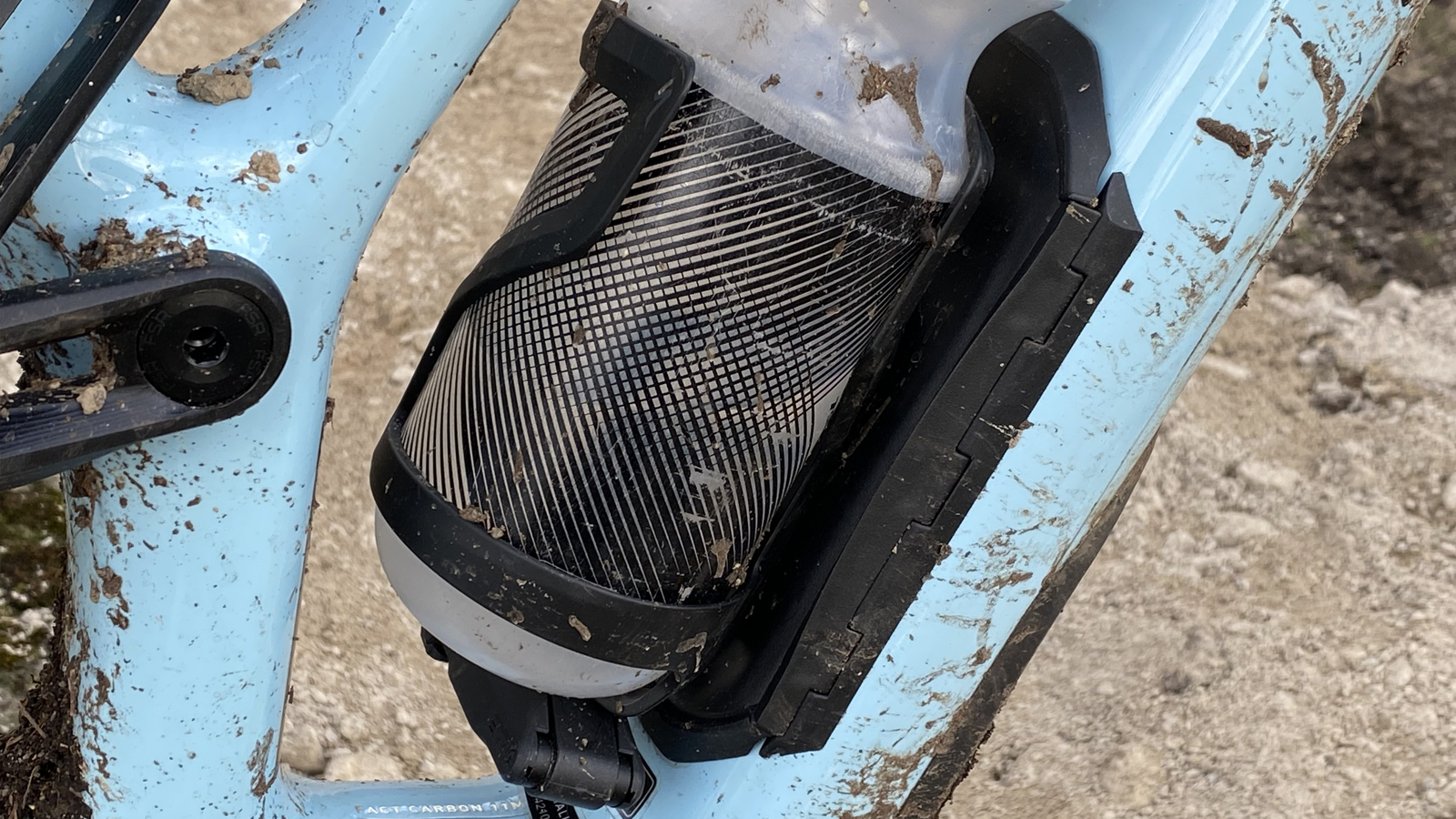
The suspension is an excellent balance of braking, pedaling, and impact smoothing neutrality that melts into the background and lets you get on with enjoying your chosen geometry. This relaxed confidence is translated to the trail really well through the generally excellent (it has occasional moments in the wet) front tire and the more touchy-feely Code RS brakes. While the high composure levels of the rest of the bike - particularly when run slack and low - can expose the simpler damper of the 36 Rhythm fork in a slappy, eventually panicked sense when you’re pushing hard. That level of fork is par for the price though it’s more of a ‘notice to upgrade’ than a red mark on the package compared to other bikes. You could say the same about the use of a 2.3in Grid Trail tire casing and harder rear compound on a bike that could be run with a 63-degree head angle and has a secondary piggyback damper to soak up the heat of extra-long, extra rough descents. We didn’t actually blow the tires up or dent the rims during testing though, despite seemingly being in a rubber/rim killing phase of our lives on other bikes.
That means the only thing worth being aware of is that while it’s light for its price and travel the Evo doesn’t surge quite as brightly or purposefully as the best bikes in the category when you put the power down. It seems to be a shared structural/suspension dynamic too as while we rarely felt the need to flick the pedal lever across to quell any excess pedal bounce, jumping between ‘brighter’ feeling bikes the difference was still there with them both ‘locked out’. On the flip side, we did notice that the same slightly softer feel could leave us feeling fresher and less ambiently fatigued on long, rough rides though. As the neutral suspension kinematic means there’s never a need to nurse pedal stroke or be particularly mindful of when you’re applying power in relation to the trail, it also makes technical climbing less taxing mentally - another fatigue gain in the long run. This slightly softer feel applies to frame precision as well as torque transfer too, and slack angle using, ragged edge hunters will likely want to speed the traction tweak response up with a shorter stem. If you’re wanting a bike that places reassurance over rad as its default character though, Specialized has set the Evo up brilliantly.
Verdict
While it’s not quite as powerful or rabidly rad as the tightest, brightest bikes in its category the Stumpjumper is still undoubtedly a phenomenal example of the best you can expect from a modern trail/aggro bike.
It’s light and agile enough to be a joy on less techy, pedaling trails or just big days out in the hills but controlled and calm enough to really push the potential of its radical geometry options. The fact you can play around with big changes to those settings in just a few minutes between runs is a unique and invaluable gift for riders who really like to dig into their dynamics too.
The ability to carry significant amounts of snacks, spares, drink, or whatever else you want safely and cleanly in the belly of the bike is another feature that Specialized still does better than anyone who’s copied them since. Throw in really sorted spec, screw-in bottom bracket, upgrade potential, and a clear weight and pop rather than plow advantage over the Alloy version and it’s hard not to see the Stumpjumper Evo Comp Carbon not just as a Specialized sweet spot, but as one of the best all-round aggro bikes you can buy.
Test conditions
- Temperature: 4-12 degrees C (39-53 F)
- Surface: Black, red and blue trail centre, off piste DH and tech singletrack
Tech Specs: Specialized Stumpjumper Evo Comp Carbon
- Price: $5,100/£4,250
- Model name: Specialized Stumpjumper Evo Comp Carbon
- Discipline: Trail / Enduro
- Head angle: 63-65.5-degree
- Frame material: Fact 11M carbon
- Sizes: S1, S2, S3, S4(tested), S5, S6
- Weight: 14.57kg without pedals
- Wheel size: 29x2.35in
- Suspension: Fox 36 Rhythm 160mm travel, 44mm offset/Fox Float X Evol Performance 150mm travel
- Drivetrain: SRAM GX Eagle 10-52T 12-speed gearing, shifter, SRAM NX chain
- Cranks: SRAM GX 30T chainset
- Brakes: SRAM CODE RS brakes with 200mm rotors
- Cockpit: Specialized 35 x 800mm bar and 35 x 50mm stem
- Wheelset: Specialized wheelset, 30mm rims
- Tires: Specialized Butcher Trail Grid T9 front and Specialized Eliminator Trail Grid T7
- Seatpost: X-Fusion Manic 175mm dropper post
- Saddle: Specialized Bridge Comp saddle

Guy Kesteven has been working on Bike Perfect since its launch in 2019. He started writing and testing for bike mags in 1996. Since then he’s written several million words about several thousand test bikes and a ridiculous amount of riding gear. He’s also penned a handful of bike-related books and he reviews MTBs over on YouTube.
Current rides: Cervelo ZFS-5, Specialized Chisel, custom Nicolai enduro tandem, Landescape/Swallow custom gravel tandem
Height: 180cm
Weight: 69kg
